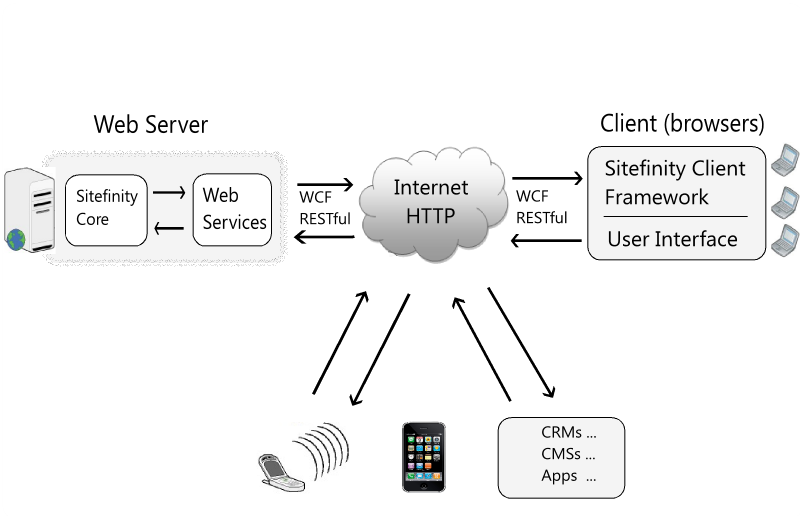Restful Web Services
A Web service is a Web page that is meant to be consumed by an autonomous program. Web service requires an architectural style to make sense of them as there need not be a human being on the receiver end to make sense of them. REST (REpresentational State Transfer) represents the model of how the modern Web should work. It is an architectural pattern that distills the way the Web already works. REST provides a set of architectural constraints that, when applied as a whole, emphasizes scalability of component interactions, generality of interfaces, independent deployment of components, and intermediary components to reduce interaction latency, enforce security, and encapsulate legacy systems.
By its nature, user actions within a distributed hypermedia system require the transfer of large amounts of data from where the data is stored to where it is used. Thus, the Web architecture must be designed for large-grain data transfer. The architecture needs to minimize the latency as much as possible. It must be scalable, secure and capable of encapsulate legacy and new elements well, as Web is subjected to constant change. REST provides a set of architectural constraints that, when applied as a whole, address all above said issues.

What is REST?
REST defines a set of architectural principles by which you can design Web services that focus on a system's resources, including how resource states are addressed and transferred over HTTP by a wide range of clients written in different languages. If measured by the number of Web services that use it, REST has emerged in the last few years alone as a predominant Web service design model. In fact, REST has had such a large impact on the Web that it has mostly displaced SOAP- and WSDL-based interface design because it's a considerably simpler style to use.
REST Web Services Characteristics
Here are the characteristics of REST:
Client-Server: a pull-based interaction style: consuming components pull representations.
Stateless: each request from client to server must contain all the information necessary to understand the request, and cannot take advantage of any stored context on the server.
Cache: to improve network efficiency responses must be capable of being labeled as cacheable or non-cacheable.
Uniform interface: all resources are accessed with a generic interface (e.g., HTTP GET, POST, PUT, DELETE).
Named resources - the system is comprised of resources which are named using a URL.
Interconnected resource representations - the representations of the resources are
interconnected using URLs, thereby enabling a client to progress from one state to another.
Layered components - intermediaries, such as proxy servers, cache servers, gateways, etc, can be inserted between clients and resources to support performance, security, etc.

